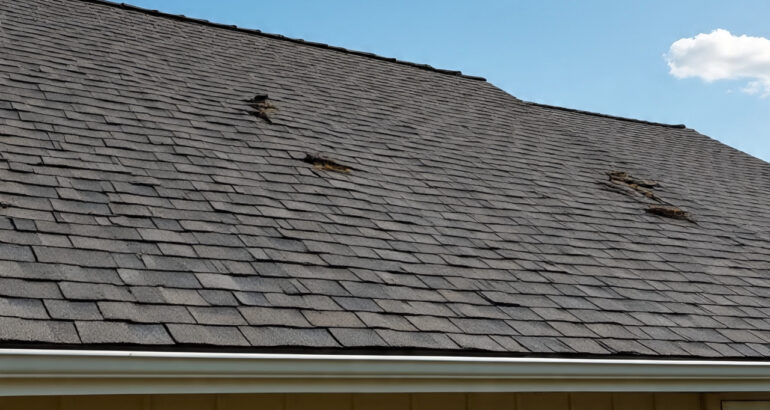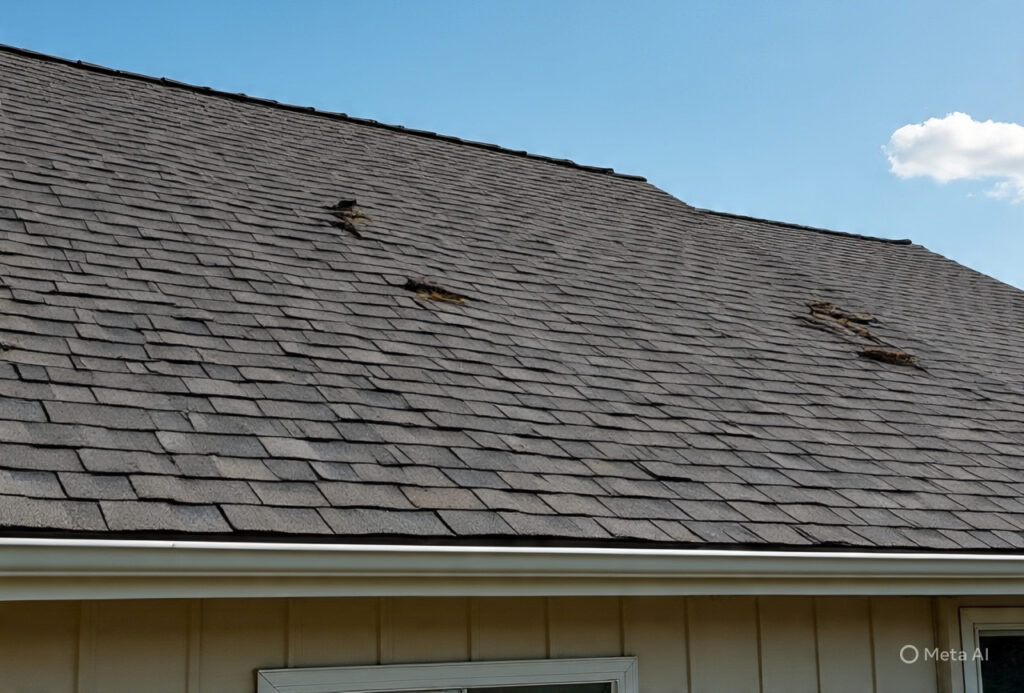
- by John Bittner
Consider New Shingles On Roof Before Calling For Insurance Quote.

Your roof protects your family and belongings from the elements, but did you know its age can significantly affect your homeowner’s insurance? Understanding this connection is crucial for maintaining adequate coverage and avoiding unexpected policy changes or premium increases.
When your roof reaches certain age milestones, insurance companies begin to view it as a higher risk. This assessment can lead to policy modifications, coverage restrictions, or even non-renewal notices. By staying informed about how roof age impacts insurance and taking proactive steps to maintain your roofing system, you can protect both your home and your wallet.
How Roof Age Affects Your Insurance Policy
Insurance companies typically begin scrutinizing roofs once they reach 10 years of age. At this point, you may notice minor adjustments to your policy terms or slight premium increases. However, the most significant changes occur when your roof hits the 20-year mark.
The 10-Year Threshold
After a decade of weather exposure, your roof begins showing signs of normal wear. Insurance providers recognize this natural aging process and may start implementing gradual policy adjustments. While these changes are usually minor, they signal the beginning of increased attention to your roof’s condition.
The Critical 20-Year Mark
Once your roof reaches 20 years, insurance companies consider it a substantial risk factor. At this stage, several scenarios may occur:
- Policy non-renewal: Some insurers refuse to renew existing policies for homes with roofs over 20 years old unless they pass a professional inspection
- New policy restrictions: Many companies won’t write new policies for homes with roofs exceeding 20 years
- Actual cash value coverage: Instead of replacement cost coverage, insurers may only pay the depreciated value of your old roof when damage occurs
This shift from replacement cost to actual cash value coverage can be particularly costly. While replacement cost coverage pays for new roof shingles and materials at current prices, actual cash value only reimburses what your aged roof is worth after decades of depreciation.
Understanding Insurance Company Data on Roof Lifespan
Insurance companies base their coverage decisions on decades of compiled data about roofs and roofing materials. This extensive research helps them predict which roofs are most likely to generate claims and when those claims might occur.
Typical Roof Lifespans by Material
Different roofing materials have varying expected lifespans, which directly influence insurance assessments:
Asphalt Shingles: The most common roofing material, asphalt shingles typically last 20 to 30 years. Issues like new roof shingles curling or new roof shingles buckling can occur earlier if installation or maintenance problems arise.
Metal Roofs: These durable systems can last up to 50 years with proper maintenance, making them favorable to insurance companies despite higher initial costs.
Tile Roofs: Clay and concrete tiles can reach 100-year lifespans, often outlasting the homes they protect. Insurance companies view these materials very favorably due to their longevity and weather resistance.
Risk Assessment Factors
Insurance providers consider several factors when evaluating roof-related risks:
- Historical claim frequency for specific roof types
- Regional weather patterns and storm damage data
- Fire resistance ratings of different materials
- Maintenance requirements and typical failure points
This data helps insurers predict costs and set appropriate premiums for different roof types and ages.
Key Factors Influencing Your Roof’s Insurability
Beyond age, several factors determine how insurance companies view your roof. Understanding these elements can help you maintain favorable coverage terms and potentially avoid costly surprises.
Roof Material Quality
The quality of your roofing materials significantly impacts insurability. When considering what are the top 5 roofing shingles, insurance companies often favor products from established manufacturers with proven track records. High-quality materials typically receive better coverage terms and may qualify for discounts.
Current Roof Condition
A well-maintained 25-year-old roof may receive better treatment than a neglected 15-year-old system. Insurance companies assess the overall condition through factors like:
- Visible damage or wear patterns
- Proper installation and workmanship
- Evidence of regular maintenance
- Structural integrity
Maintenance History
Documented maintenance records demonstrate responsible homeownership. Regular inspections and timely repairs show insurers that you’re actively protecting your investment, which can positively influence their coverage decisions.
Geographic Considerations
Your location affects how insurance companies view your roof. Areas prone to severe weather, hail storms, or high winds may face stricter requirements or higher premiums, regardless of roof age.
Essential Maintenance Tips to Preserve Insurance Coverage
Proactive maintenance is your best defense against insurance-related roof issues. Following proper care guidelines can extend your roof’s life and maintain favorable coverage terms.
Follow Manufacturer Guidelines
Every roofing material comes with specific maintenance recommendations. Adhering to these guidelines not only preserves your warranty but also demonstrates responsible ownership to insurance providers.
Schedule Annual Inspections
Professional roof inspections should occur at least annually, with additional checks after severe weather events. These assessments can identify problems before they become insurance claims, potentially saving thousands in repair costs.
Address Issues Promptly
When inspections reveal problems, address them immediately. Small repairs are far less expensive than major replacements, and prompt action shows insurers you’re committed to maintaining your property.
Document Everything
Keep detailed records of all maintenance, repairs, and inspections. This documentation can be invaluable when dealing with insurance claims or proving your roof’s condition to providers.
Consider Professional Help
While some maintenance tasks can be DIY projects, major repairs and assessments should involve qualified professionals. Companies like Bittner Roofs provide expert evaluations and can help you maintain your roof’s insurability.
Cost Considerations and Planning
Understanding the financial implications of roof age on insurance helps you plan effectively for future expenses.
Replacement Cost Planning
The cost of new shingle roof 2000 sq ft can vary significantly based on materials and local labor rates. Planning for this expense before your roof reaches critical age thresholds can help you avoid rushed decisions or insurance complications.
Addressing Common Issues
Problems like new roof shingles don’t match existing ones or new roof shingles buckling require immediate attention. These issues can affect both your roof’s performance and your insurance coverage if left unaddressed.
Weighing Options
The decision between new roof vs new shingles depends on your roof’s overall condition, age, and insurance requirements. Sometimes partial replacement may suffice, while other situations demand complete system renewal.
Protecting Your Investment Through Professional Partnership
Maintaining your roof’s insurability requires expertise and consistent attention. Professional roofing contractors can provide the guidance and services necessary to keep your coverage intact while protecting your home.
Regular professional evaluations help identify potential issues before they become insurance problems. Qualified contractors can also provide documentation that insurance companies recognize and trust.
For homeowners concerned about their roof’s impact on insurance coverage, partnering with experienced professionals like Bittner Roofs ensures you receive expert guidance tailored to your specific situation. Contact them at (570)-531-0449 to schedule a comprehensive roof evaluation and learn how to maintain optimal insurance coverage.
Your roof is one of your home’s most critical components, and its condition directly affects your insurance protection. By understanding how age impacts coverage and taking proactive steps to maintain your roofing system, you can ensure continued protection for your family and investment. Don’t wait until your insurance company sends a notice—take action today to keep your roof and coverage in excellent condition.


